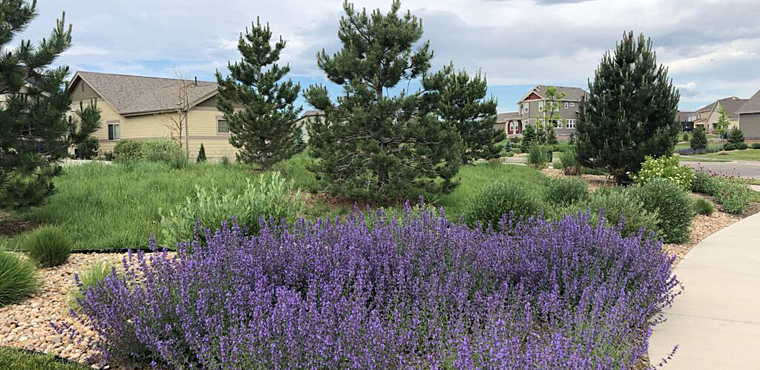
Historically, large suburban housing developments created on either open space or agricultural lands have utilized fairly routine site design and landscaping plans that meet the conventional aesthetic requirements of the marketplace. Front lawns, flowering shrubs, trees of a wide variety, lots of impermeable surfaces and other typical “House Beautiful” type treatments of outdoor space dominate housing development patterns.
A notable drawback of most suburban development is that many native insect, bird and animal species are left without acceptable habitat and their numbers and diversity quickly decline. While the gardens, shrubs and trees of most developments appear outwardly pleasant and pleasing to the human eye, the other creatures that share the developed land adapted and thrived in an entirely different kind of habitat.
In order to address this problem, some forward thinking environmentalists are working with developers to create “suburbitat” instead of “suburbia.” The concept of suburbitat involves creating developments that take into consideration the type of habitat in which it is created, and retaining as many of those characteristics as possible. The effect is the creation of an ecologically integrated development that remains a viable habitat for native species. The selection of plant materials, creation of water features, retention of rocky outcroppings or wetlands, and other features identified with the breeding or feeding of existing species becomes central to the overall plan.
First, the identification and inventory of local native species of plants and animals on or adjacent to a designated development site is completed. Once this is accomplished, the overall site development plan is created, with an eye to enhancing and retaining the natural habitat as much as possible. Rather than the eye-pleasing, manicured and sterile suburban environment that supports only a few native species, suburbitat meets the needs of both people and other creatures. Particularly here in California, where our dry months make heavily-watered green lawns and high-water use shrubs and bushes wasteful and expensive to maintain, an alternative combination of native plants and site design can not only support more native wildlife, but helps conserve shrinking water supplies and lowers homeowner costs.
People will always need housing, and as the population continues to grow, suburbs will be built. Using standard suburban development plans deprives native species of habitat, and merely responds to cultural and habitual patterns out of step with local ecology. If we are to create a future of biological diversity and complexity, our future housing developments must become strongholds of habitat that support native species and become better integrated into the natural areas surrounding them. Rather than sterile islands, they can become wildlife and native species reserves, actually supporting the environment rather than degrading it.
As the public’s growing attention to environmental issues continues to generate economic impacts, suburbitat will establish itself not only as a sound method to help protect the environment, but will also greatly appeal to the many contemporary home buyers who desire to purchase a new home unburdened by guilt, knowing that their choice of where to live has not deprived a larger world of creatures the same opportunity.